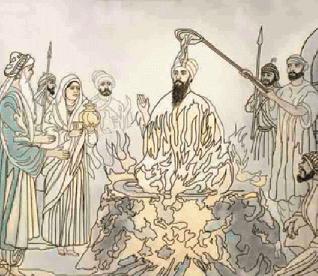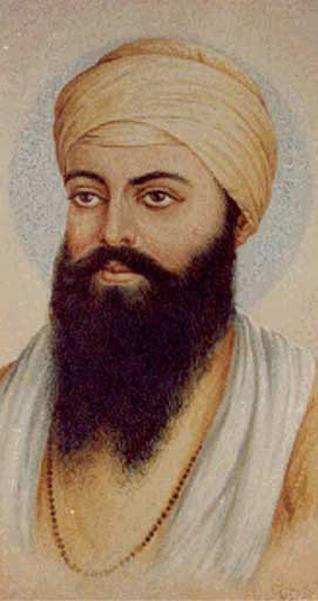Columnists
Guru Arjan's Martyrdom
by RAVINDER SINGH TANEJA
On the day in June marking the martyrdom of the Fifth Sikh Guru, Sikhs venture out, as they have done for hundreds of years, to set up roadside stalls in neighborhoods across India - and now across the world as well.
The stalls serve as way stations to offer any passerby protection from the scorching sun and refreshment in the form of a cooling drink called kacchi lassi, made with a mix of milk, water, sugar, rose water and ice.
This is how Sikhs honor the memory of Guru Arjan who died on this day in June 1606 in Lahore (modern-day Pakistan).
He had been tortured over a period of five days, alternatively strapped to a pole in the open sun for hours on end; denied sleep and water; forced to sit on a sizzling griddle while burning sand was poured over his body and dipped in boiling water. When his body could endure no longer, he was tied up and drowned in the Ravi, which flowed through the city.
This was death by yasa siyasat (literally, capital punishment). Its basis was the penal code of Genghis Khan and it was used during Mughal rule as punishment for crimes against the state.
The Guru died while in state custody. He had been summoned by Imperial decree to Lahore, charged with treason and executed by orders of Emperor Jahangir, ruler of the Mughal Empire from 1605 to 1627.
The ostensible reason for the charges was that Guru Arjan had supported an enemy of the State, Prince Khusrau, the eldest son of the Emperor, by providing him with moral and monetary support in his revolt against the Emperor.
But it was the charismatic presence of Guru Arjan as the spiritual heir of the revolutionary Guru Nanak, and the growing popularity of the Sikh spiritual movement, that was most unsettling to the Emperor.
In his diaries, the Tuzuk-i-Jahangiri, he is very explicit
that "so many of the simple-minded Hindus, nay, many foolish Muslims
too, have been fascinated by the Guru's ways and teaching. For many
years, the thought had been presenting itself to my mind that either I
should put an end to this false traffic, or he be brought into the fold
of Islam."
Clearly, the Emperor was looking for a pretext to eliminate the Guru and
the danger of what he saw as a potential "state within a state" -
Imperium in Imperio.
Despite the horrific killing of Guru Arjan, when Sikhs take to the streets today, there will be no anger, no mourning and no protests. Instead, they will serve with prayer and humility, practicing the Guru's teaching:
"There is no enemy, and none is a stranger."
Guru Arjan's death was no ordinary death. Like Jesus' crucifixion, it
was iconic: the image of the Guru, absorbed in deep meditation as he
sits on a burning pan, is forever impressed in the collective psyche and
imagination of the Sikhs and adorns their homes in pictures, calendars
and other artifacts.
History and tradition tell us that Guru Arjan could have avoided this fate. After all, he was given the option of paying a fine or conversion to Islam. He refused both.
Why?
"Sweet is Thy will," Guru Arjan is reported to have whispered in his final hours.
By choosing death, he practiced the fundamental lesson of Sikh teachings: obedience to Hukam (the Will of God). He must have been keenly aware that the Gurmat (the way of the Guru) he inherited from Guru Nanak was potentially dangerous and could prove fatal to him, as it indeed did.
For Sikhs, the meaning and purpose of life is to be found in Hukam or direct obedience to that Divine Will whose writ rules the universe. By dying in the service of God, Guru Arjan taught Sikhs what is worth dying for and therefore what is worth living for, what is important and what is authentic.
Guru Arjan - mystic, scholar, poet, musician and an organizational genius -- was a man nonpareil. He gave to Guru Nanak's universal message an institutional structure and doctrinal coherence.
"Of all religions," he wrote, "the best is to utter the holy name with love," and "of all temples, the most sacred is the heart in which the Divine dwells." God is Love and dwells in all of us.
God is also one, we just see it differently, a point that Guru Arjan makes:
Some call out Ram, Ram, some Khuda,
Some revere Him as Gosain, others as Allah
Hindus bathe in Holy waters; Muslims go to Mecca,
Some read the Vedas, others the Semitic Scriptures;
Some wear blue, others white,
Says Nanak, he alone who knows the Will of God
Will know His secrets.
[Courtesy: Huffington Post. Edited for sikhchic.com]
June 17, 2011




